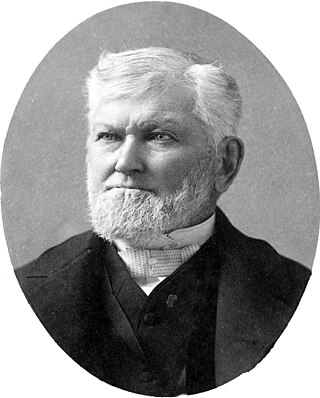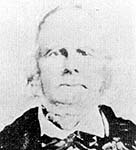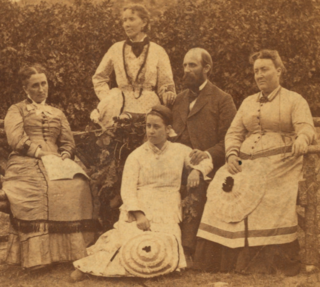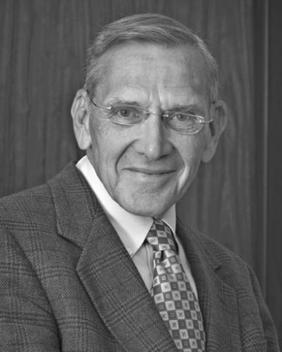Thomas Glen Alexander [1] (born August 8, 1935) [2] is an American historian and academic who is a professor emeritus [3] at Brigham Young University (BYU) in Provo, Utah, where he was also Lemuel Hardison Redd, Jr. Professor of Western History and director of the Charles Redd Center for Western Studies. After studying at Weber State University (WSU) and Utah State University (USU), he received a PhD from the University of California, Berkeley (UC Berkeley) in 1965. He taught history at BYU from 1964 until 2004, and served in the leadership of various local and historical organizations.
Alexander was born in Logan, Utah to Glen M. and Violet B. Alexander. [2] He was raised in Ogden, Utah and from 1956 to 1958 he served a proselytizing mission for the Church of Jesus Christ of Latter-day Saints (LDS Church) in the West German Mission. Alexander earned an associate degree (1955) at WSU, and then both bachelor's (1960) and master's degrees (1961) from USU. [2] While in Logan, Alexander first met Leonard Arrington, who was serving in the LDS Church's university stake presidency. [4] In 1965, Alexander received a PhD in American History from UC Berkeley. [2]
Alexander joined the BYU history faculty in 1964, teaching Utah history and American environmental history. He was the Lemuel Hardison Redd, Jr. Professor of Western American History from 1992 until his retirement in 2004. [5] [6] He was the director of the Charles Redd Center for Wester Studies at BYU from 1980 until 1992. [7] He taught at USU, UC Berkeley, the University of Nebraska at Kearney, Southern Illinois University, and the University of Utah. He has received BYU's highest faculty award, the Karl G. Maeser Distinguished Faculty Lecturer Award. [2] In 2001, he received the Emeriti Alumni Lifetime Achievement Award from WSU. [8]
Alexander has served in various historical and academic organizations. He was president of the Mormon History Association from 1974 until 1975. [9] He has also been president of the Pacific Branch of the American Historical Association; president and fellow of the Utah Academy of Sciences, Arts, and Letters; president of the Association of Utah Historians; chair of the Utah Board of State History; chair of the Utah Humanities Council; national president of Phi Alpha Theta, the history honor society; fellow of the Utah State Historical Society; and chair of BYU's Faculty Advisory Council. [2] He was president of the Sons of Utah Pioneers in 2015 [10] [11] and as of 2019 was on the editorial staff for the organization's publication, Pioneer Magazine. [12]
Alexander wrote an essay about the epistemological stance of historians practicing "New Mormon History." Alexander identified two parties that seek to define New Mormon History, traditionalists and secularists. He listed Louis C. Midgley and David E. Bohn among the traditionalists who describe New Mormon Historians as positivists. Alexander stated that this is a miscategorization, because New Mormon Historians usually accepted spiritual experiences like Joseph Smith's visions, rather than attributing them to mental illness or fabrication as a positivist might. Some critics of New Mormon History, like Michael T. Walton and E. K. Hunt, made arguments in favor of positivism in response to traditionalist arguments. They argued that God and religious experiences could not be considered objective, and that therefore academic history should not consider them. [13] Alexander placed New Mormon History in the "historicist tradition." [13] : 31 Rather than using historical models to predict the future, as a scientist might, historicists use models of history to improve their understanding of history. [13] In a later essay, Alexander described the views of New Mormon Historians as "that of a relativist and a revisionist." [14]
Alexander wrote Things in Heaven and Earth: The Life and Times of Wilford Woodruff, a biography of Wilford Woodruff, the LDS Church's fourth president, which provides insight into the development of Mormonism and the American West. Alexander asserts that Woodruff was "...arguably the third most important figure in all of LDS Church history after Joseph Smith ... and Brigham Young." While other LDS and western historians may disagree with the ranking, his work provides a careful study of a very important leader in the emerging Mormon faith. [15] Writing for Sunstone magazine, Kenneth L. Cannon II called the book "one of the two or three best and most important biographies of nineteenth-century Church leaders." [15]
Alexander married Marilyn Johns in 1959 and they are the parents of five children. [2] He has served in various positions in the LDS Church, [4] including as a bishop and stake high councilor. [2] From 2004 to 2005, he and his wife served a Church Educational System mission for the church in Berlin, Germany. [6]
Alexander has authored, co-authored, edited, or co-edited 25 books and over 150 scholarly articles. He has won numerous awards for his work, including Mormonism in Transition and Things in Heaven and Earth. The Utah state government commissioned Alexander to write Utah: The Right Place as the state's official centennial history. [2]

Wilford Woodruff Sr. was an American religious leader who served as the fourth president of the Church of Jesus Christ of Latter-day Saints from 1889 until his death. He ended the public practice of plural marriage among members of the LDS Church in 1890.

Leonard James Arrington was an American author, academic and the founder of the Mormon History Association. He is known as the "Dean of Mormon History" and "the Father of Mormon History" because of his many influential contributions to the field. Since 1842, he was the first non-general authority Church Historian for the Church of Jesus Christ of Latter-day Saints, from 1972 to 1982, and was director of the Joseph Fielding Smith Institute for Church History from 1982 until 1986.
The Mormon Reformation was a period of renewed emphasis on spirituality within the Church of Jesus Christ of Latter-day Saints, and a centrally-directed movement, which called for a spiritual reawakening among church members. It took place during 1856 and 1857 and was under the direction of church president Brigham Young. During the Reformation, Young sent his counselor, Jedediah M. Grant, and other church leaders to preach to the people throughout Utah Territory and surrounding Latter-day Saint communities with the goal of inspiring them to reject sin and turn towards spiritual things. During this time, some of the most conservative or reactionary elements of LDS Church doctrine came to dominate public discussion. As part of the Reformation, almost all "active" or involved LDS Church members were rebaptized as a symbol of their commitment. The Reformation is considered in three phases: a structural reform phase, a phase of intense demand for a demonstration of spiritual reform, and a final phase during which an emphasis was placed on love and reconstruction.

Zera Pulsipher was a First Seven Presidents of the Seventy of the Church of Jesus Christ of Latter-day Saints. In that capacity, he provided leadership to the early Mormon community, most notably in the exodus of a large group of Saints from Kirtland, Ohio. He was also an active missionary who baptized Wilford Woodruff into the LDS Church.

Possibly as early as the 1830s, followers of the Latter Day Saint movement, were practicing the doctrine of polygamy or "plural marriage". After the death of church founder Joseph Smith, the doctrine was officially announced in Utah Territory in 1852 by Mormon leader Brigham Young. The practice was attributed posthumously to Smith and it began among Mormons at large, principally in Utah where the Church of Jesus Christ of Latter-day Saints had relocated after the Illinois Mormon War.
Dean Cornell Jessee is a historian of the early Latter Day Saint movement and leading expert on the writings of Joseph Smith Jr.
Brigham Young University Press was the university press of Brigham Young University (BYU).
James Brown Allen is an American historian of Mormonism and was an official Assistant Church Historian of the Church of Jesus Christ of Latter-day Saints from 1972 to 1979. While working as Assistant Church Historian, he co-authored The Story of the Latter-day Saints with Glen Leonard. After Ezra Taft Benson dismissed the book as secular new history, other events led to the dissolution of the LDS Church History department in 1982. Allen resigned as Assistant Church Historian in 1979, returning to work at Brigham Young University (BYU) full-time.
Grant Revon Underwood is a historian of the Church of Jesus Christ of Latter-day Saints and a professor at Brigham Young University (BYU). He is also the author of The Millennial World of Early Mormonism and the editor of Voyages of Faith: Explorations in Mormon Pacific History.
Steven Craig Harper is a professor of church history and doctrine at Brigham Young University. He was a historian for the Church History Department of the Church of Jesus Christ of Latter-day Saints. From 2019, he is the Editor-in-Chief of BYU Studies Quarterly.
The Religious Studies Center (RSC) at Brigham Young University (BYU) sponsors and publishes scholarship on the culture, history, scripture, and doctrine of the Church of Jesus Christ of Latter-day Saints.

Ronald Warren Walker was an American historian of the Latter Day Saint movement and a professor at Brigham Young University (BYU) and president of the Mormon History Association. His work, acclaimed by the Mormon History Association, dealt with the Godbeites, the Utah War, and the Mountain Meadows Massacre, among other topics.
Mormon studies is the interdisciplinary academic study of the beliefs, practices, history and culture of individuals and denominations belonging to the Latter Day Saint movement, a religious movement associated with the Book of Mormon, though not all churches and members of the Latter Day Saint movement identify with the terms Mormon or Mormonism. Denominations of the Latter Day Saint movement include the Church of Jesus Christ of Latter-day Saints, by far the largest, as well as the Community of Christ (CoC) and other smaller groups, include some categorized under the umbrella term Mormon fundamentalism.

The John Whitmer Historical Association (JWHA) is an independent, nonprofit organization promoting study, research, and publishing about the history and culture of the Latter Day Saint movement. It is especially focused on the Community of Christ, other midwestern Restoration traditions, and early Mormonism. The Community of Christ's approach to its own history was influenced, in part, by historical problems raised and explored through JWHA publications and conferences, and those of its sister organization, the Mormon History Association. JWHA membership numbers around 400 and is open to all, fostering cooperation with LDS and non-Mormon scholars.
Reid Larkin Neilson is the assistant academic vice president (AAVP) for religious scholarly publications at Brigham Young University (BYU). He was the Assistant Church Historian and Recorder for the Church of Jesus Christ of Latter-day Saints from 2015 to 2019, and the managing director of the church's history department from 2010 to 2019.

The following outline is provided as an overview of and a topical guide to the Church of Jesus Christ of Latter-day Saints.
This is a timeline of LGBT Mormon history in the 19th century, part of a series of timelines consisting of events, publications, and speeches about LGBTQ+ individuals, topics around sexual orientation and gender minorities, and the community of members of the Church of Jesus Christ of Latter-day Saints. Although the historical record is often scarce, evidence points to queer individuals having existed in the Mormon community since its beginnings. However, top LDS leaders only started regularly addressing queer topics in public in the late 1950s. Since 1970, the LDS Church has had at least one official publication or speech from a high-ranking leader referencing LGBT topics every year, and a greater number of LGBT Mormon and former Mormon individuals have received media coverage.